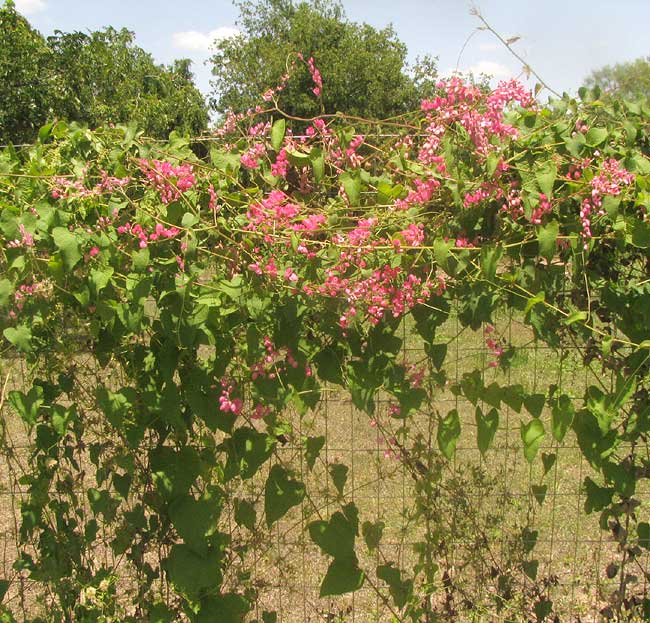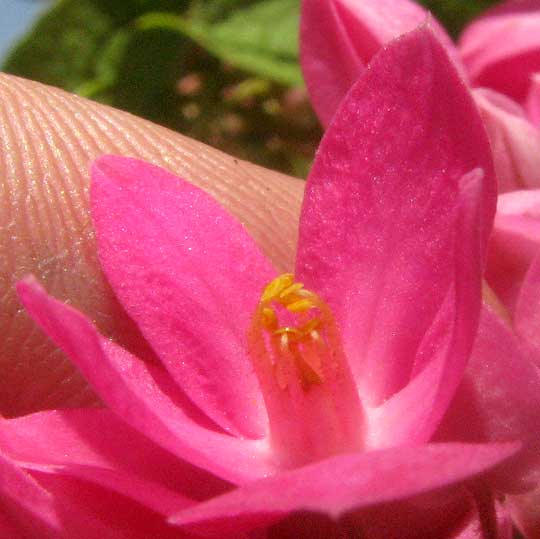Excerpts from Jim Conrad's
Naturalist Newsletter

page July 27, 2014 Newsletter issued from the Frio Canyon Nature Education Center in the valley of the Dry Frio River in northern Uvalde County, southwestern Texas, on the southern border of the Edwards Plateau; elevation ~1750m (~5750 ft); N29.62°, W99.86°; USA
CORALVINE
If you were with me during the Yucatan years you probably remember my frequent mention of the Coralvine, ANTIGONON LEPTUPUS, so often found clambering over rock walls, bunching atop wire fences, overgrowing bushes and small trees, and generally filling the landscape with splendiferous, almost gaudy blotches of vivid pinkish-red flower clusters set against emerald green leaves. Our Coralvine Page is at http://www.backyardnature.net/yucatan/coralvin.htm.
So, feeling a bit nostalgic for Mexico nowadays, as I explored Uvalde's backstreets, you can imagine my pleasure at finding good old Coralvine massing atop somebody' wire fence just a prettily as if growing wild in its native Mexico, as seen at the top of this page. A close-up of a flower cluster is shown below:

A flower close-up showing its five-parted perianth (a perianth being the collection of petal-like affairs that are neither clearly corolla petals nor calyx sepals), and its eight stamens, appears below:

A curiosity, but a feature typical of the Buckwheat Family, is that of the Coralvine's five perianth lobes, or "tepals," two or three outer ones are heart-shaped or egg-shaped which the inter ones are more slender. Below, you can see how a blossom with three heart-shaped outer tepals assumes a three-cornered appearance -- often seen in the Buckwheat Family:

Coralvines are cultivated all across the US Deep South, and sometimes are noted to persist in certain areas if they are abandoned. However, the Flora of North America says that probably the species has "naturalized," or "gone wild," only in Florida and southern Texas. Also, the species is so pretty that it's been introduced into, and often naturalized, in many tropical countries worldwide, especially in South America. That's one reason why it's known by so many English names other than Coralvine, such as Queen's Jewels, Confederate Vine, Mountain-rose Coralvine and Love-chain. In Spanish it's Corallita. The word "coral" often is applied to anything that's strikingly red.
Coralvines produce edible tubers, though it'd be a shame to eat them, destroying the vines that otherwise would arise from them.